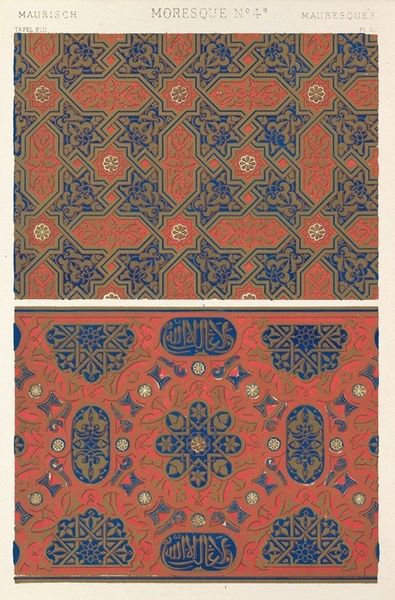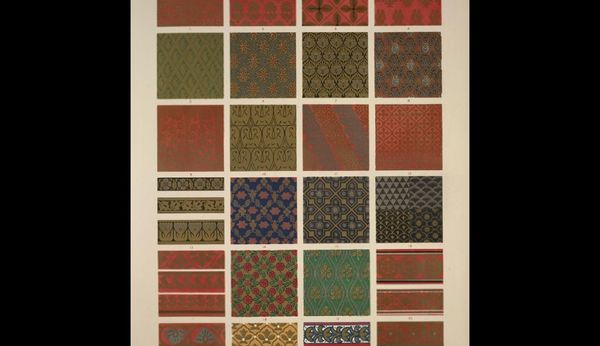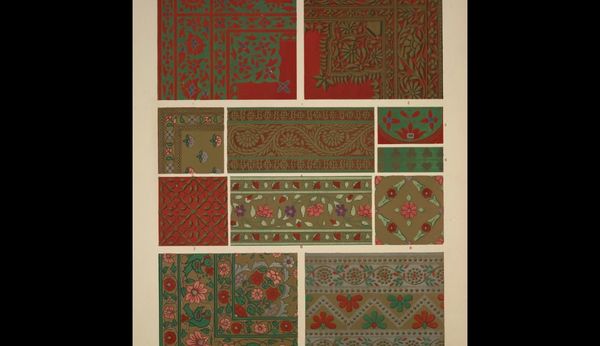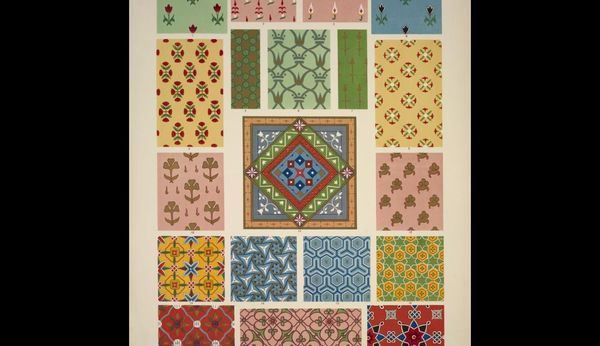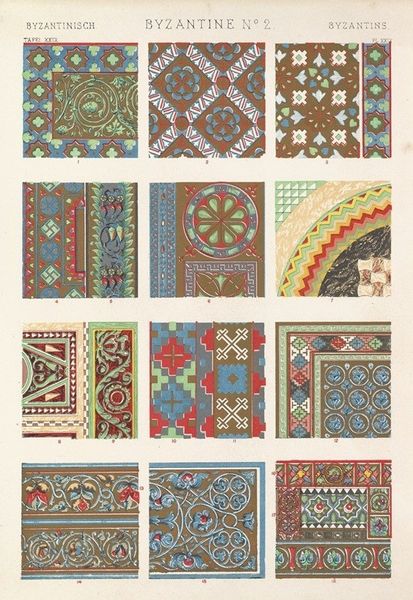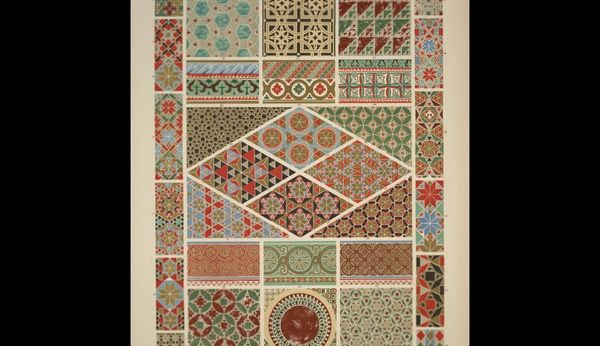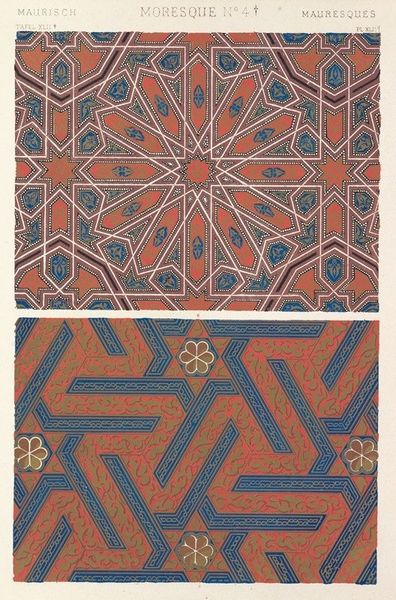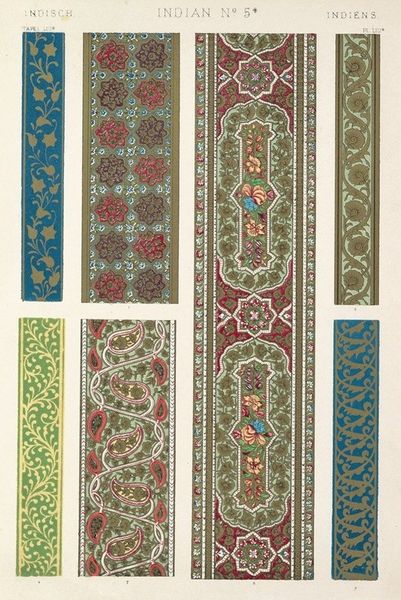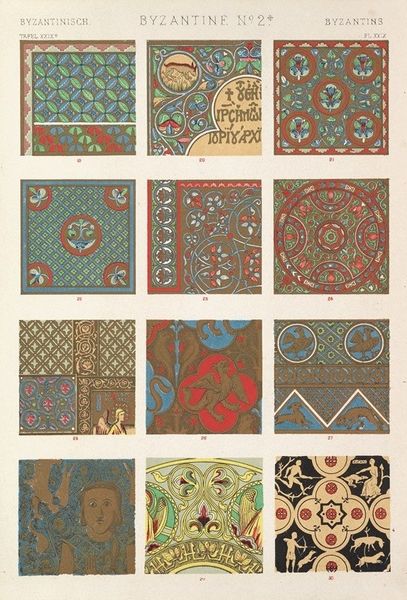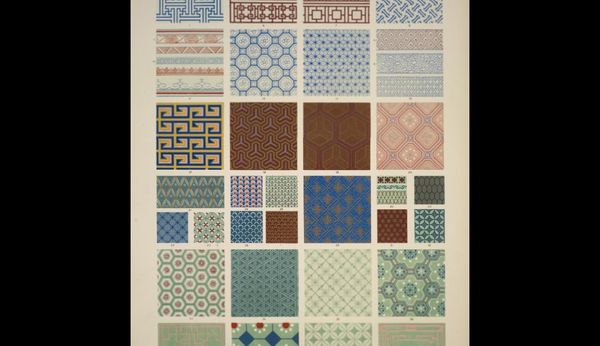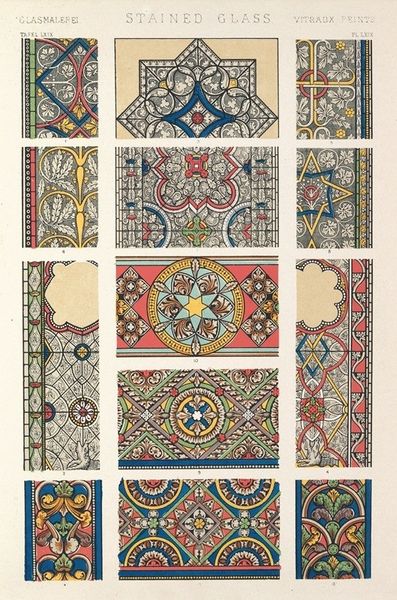
textile
#
natural stone pattern
#
pattern
#
textile
#
text
#
geometric pattern
#
subtle pattern
#
abstract pattern
#
repetitive shape and pattern
#
organic pattern
#
geometric
#
repetition of pattern
#
vertical pattern
#
pattern repetition
#
islamic-art
#
decorative-art
#
layered pattern
Copyright: Public domain
Editor: This image vibrates, almost hums, with layered complexity! It feels ancient and hyper-modern all at once, you know? Curator: We are looking at a piece entitled "Moresque ornament from the Alhambra no. 4. Square diapers" by Owen Jones. While a specific date is unavailable, Jones was most active during the 19th century, a period marked by significant orientalist fascinations in Europe. The artwork appears to be a textile sample, demonstrating patterns inspired by Islamic art, particularly the intricate designs found in the Alhambra palace. Editor: Textile! That explains the tangible feel, almost as if I want to reach out and trace the interwoven threads...The geometrical shapes feel so intentional, mathematical, yet balanced and, yes, harmonious. The way those blues and ochres play with each other is gorgeous! It makes me think about ancient coding somehow, visual algorithms creating something both rigorous and beautiful. Curator: Precisely. The patterns demonstrate a sophisticated understanding of geometry, reflecting Islamic beliefs about the underlying mathematical order of the universe. Beyond their visual appeal, these textile designs reveal the interwoven politics of cross-cultural influence, trade, and the visual appropriation of non-Western aesthetics in Europe. It prompts considerations regarding the agency of Islamic artisans whose innovations inspired European designers like Jones. Editor: Hmm, “visual appropriation”, that feels harsh though...Couldn’t it also signal cross-cultural dialogue? Isn’t imitation also the sincerest form of flattery? It’s always so complicated. Perhaps Jones found sincere inspiration? It sparks creativity to be exposed to a rich tradition different from our own. The repeating patterns, layered upon layered—it evokes a kind of visual meditation, calming despite the intricacy. Like an old tapestry whispering stories. Curator: It's less about assigning individual blame and more about interrogating the asymmetrical power dynamics at play during this era, especially the cultural and social history behind production in non-European regions and global movements, and Jones’ relationship to all that. What narratives were elevated? Which ones were silenced? What economic benefits came to which social classes and groups? Editor: These patterns though…They resonate with such clarity, whether or not appropriation was in the designer's conscious intentions. It is impossible to deny that these complex patterns, with all of their geometry and balance, give rest to the mind through aesthetic delight. Looking at them, it feels timeless. Curator: Exactly, and by recognizing those layers, perhaps we understand how artistic production and historical context aren’t just related, but essentially fused—each a condition to interpreting the other.
Comments
No comments
Be the first to comment and join the conversation on the ultimate creative platform.


